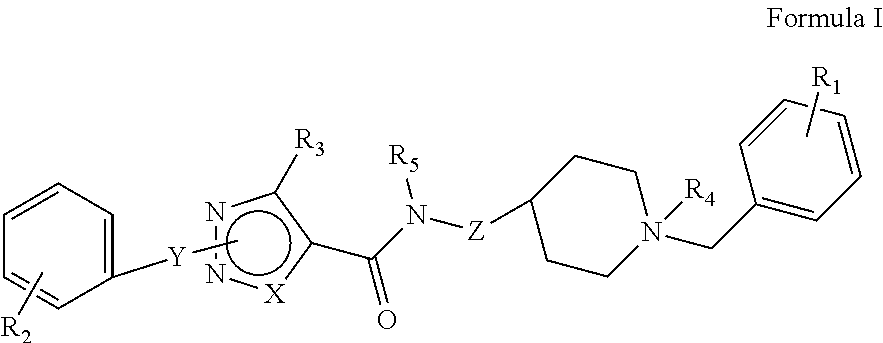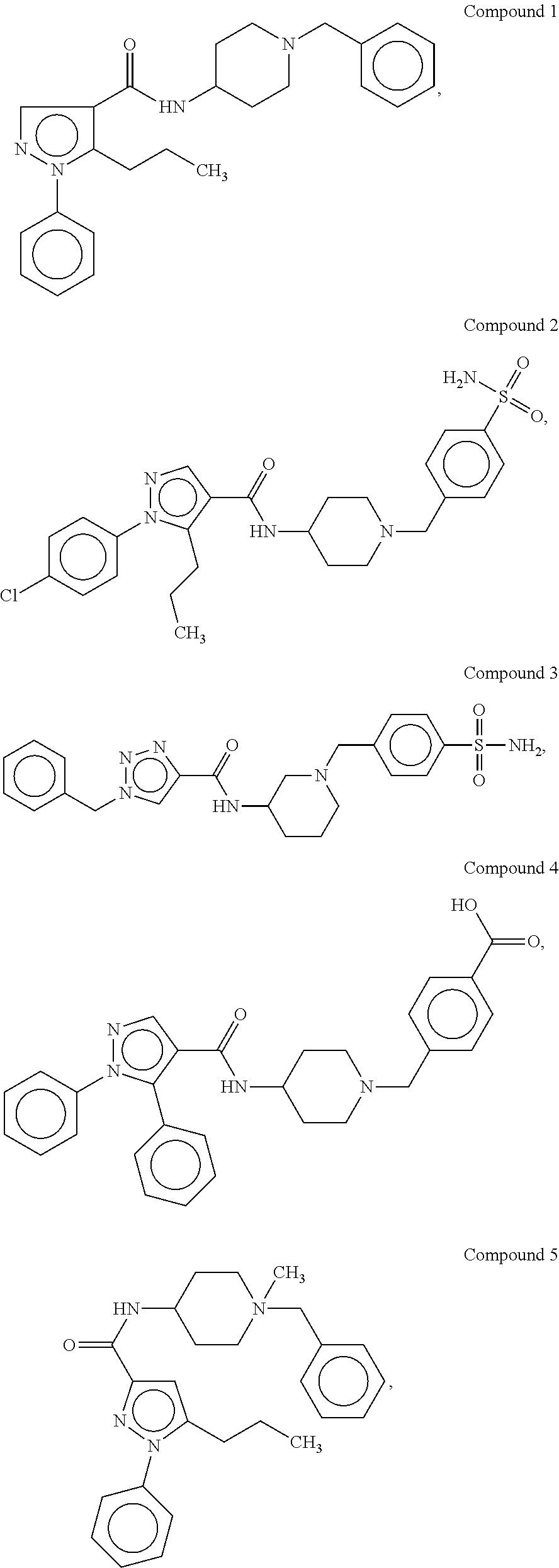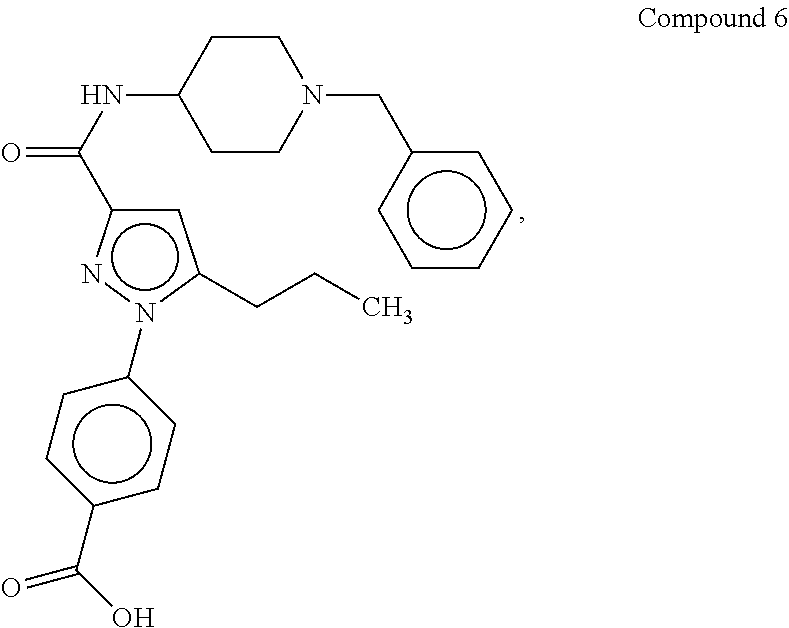Organic compounds
a technology of organic compounds and selective antagonists, applied in the field of organic compounds, can solve the problems of limited development of 7 selective antagonists, limited specific treatment options for sclc, and general death of patients, and achieve the effect of improving cognition
- Summary
- Abstract
- Description
- Claims
- Application Information
AI Technical Summary
Benefits of technology
Problems solved by technology
Method used
Image
Examples
example 1
N-((1-benzylpiperidin-4-yl)methyl)-2-(4-sulfamoylbenzyl)-2H-1,2,3-triazole-4-carboxamide
[0263]
(a) tert-butyl 4-((1H-1,2,3-triazole-4-carboxamido)methyl)piperidine-1-carboxylate
[0264]To a solution of 1H-1,2,3-triazole-4-carboxylic acid (113 mg, 1.0 m mol) and tert-butyl 4-(aminomethyl)piperidine-1-carboxylate (256 mg, 1.2 mmol) in DMF (1.5 mL) is added BOP (530 mg, 1.2 mmol), followed by DIPEA (0.48 mL). The reaction mixture is stirred at room temperature overnight. The solvent is removed under reduced pressure, and the residue is treated with saturated sodium bicarbonate aqueous solution, followed by extraction with methylene and methanol (10:1, v / v). The combined organic phase is evaporated to dryness to give crude product, which is used in the next step without further purification. MS (ESI) m / z 210.1 [M-Boc+H]+
(b) tert-butyl 4-((2-(4-sulfamoylbenzyl)-2H-1,2,3-triazole-4-carboxamido)methyl)piperidine-1-carboxylate
[0265]A suspension of crude tert-butyl 4-((1H-1,2,3-triazole-4-carbo...
example 2
N-((1-(4-fluorobenzyl)piperdin-4-yl)methyl)-2-(4-sulfamoylbenzyl)-2H-1,2,3-triazole-4-carboxamide
[0268]
[0269]This compound is prepared using the procedure analogous to example 1 wherein 4-fluorobenzyl bromide is added in step (d) instead of benzyl bromide. Product is obtained as a white solid with 98% purity (yield: 81%). MS (ESI) m / z 487.2 [M+H]+.
example 3
N-((1-(2,4-dichlorobenzyl)piperidin-4-yl)methyl-2-(4-sulfamoylbenzyl)-2H-1,2,3-triazole-4-carboxamide
[0270]
[0271]This compound is prepared using the procedure analogous to example 1 wherein 2,4-dichlorobenzyl bromide is added in step (d) instead of benzyl bromide. Product is obtained as a white solid with 95% purity (yield: 62%). MS (ESI) m / z 537.2 [M+H]+.
PUM
| Property | Measurement | Unit |
|---|---|---|
| Molar density | aaaaa | aaaaa |
| Pharmaceutically acceptable | aaaaa | aaaaa |
Abstract
Description
Claims
Application Information
 Login to View More
Login to View More - R&D
- Intellectual Property
- Life Sciences
- Materials
- Tech Scout
- Unparalleled Data Quality
- Higher Quality Content
- 60% Fewer Hallucinations
Browse by: Latest US Patents, China's latest patents, Technical Efficacy Thesaurus, Application Domain, Technology Topic, Popular Technical Reports.
© 2025 PatSnap. All rights reserved.Legal|Privacy policy|Modern Slavery Act Transparency Statement|Sitemap|About US| Contact US: help@patsnap.com



